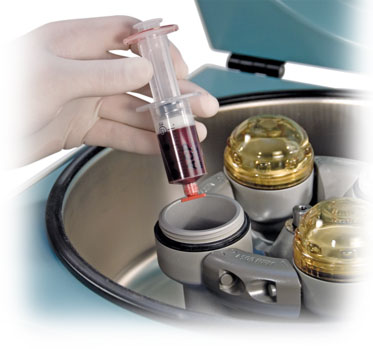 Healing after an injury involves a well-orchestrated and complex series of events where proteins in the blood act as messengers to regulate the entire process. PRP, or platelet-rich plasma, is a sophisticated biologic tool that has been shown to vastly improve healing following an orthopedic injury, musculoskeletal Injury, or surgical procedure. PRP is not only effective, but it is also based on the simple concept that taps into the body’s own healing potential. Many proteins involved in the healing process are derived from small cell fragments in the blood called platelets. Platelets are small, colorless, cell fragments present in the blood. They are formed in the bone marrow and are freely passing through the bloodstream in a resting state. However, when an injury occurs, the platelets become activated and start to gather at the injury site to release beneficial proteins called growth factors. This is the beginning of the healing process. For many years, blood components derived from the patient and then delivered to the site of injury have created growing interest for use in orthopedic procedures. New research and technology has expanded the application of this therapy for use in orthopedic procedures.
Healing after an injury involves a well-orchestrated and complex series of events where proteins in the blood act as messengers to regulate the entire process. PRP, or platelet-rich plasma, is a sophisticated biologic tool that has been shown to vastly improve healing following an orthopedic injury, musculoskeletal Injury, or surgical procedure. PRP is not only effective, but it is also based on the simple concept that taps into the body’s own healing potential. Many proteins involved in the healing process are derived from small cell fragments in the blood called platelets. Platelets are small, colorless, cell fragments present in the blood. They are formed in the bone marrow and are freely passing through the bloodstream in a resting state. However, when an injury occurs, the platelets become activated and start to gather at the injury site to release beneficial proteins called growth factors. This is the beginning of the healing process. For many years, blood components derived from the patient and then delivered to the site of injury have created growing interest for use in orthopedic procedures. New research and technology has expanded the application of this therapy for use in orthopedic procedures.
What is Platelet Rich Plasma (PRP)?
Platelet Rich Plasma is a concentration of platelets and growth factors created from a small amount of your own blood or bone marrow. Increased levels of growth factors have the potential to improve signaling and recruitment of cells. This concentrated portion of the blood or bone marrow is often referred to as platelet-rich plasma (PRP).
How does the PRP process work?
Your health care provider will recover a small amount of blood or bone marrow. This sample then goes through a rapid spinning process that separates and concentrates the platelets and other beneficial growth factors from the blood. The entire PRP production process is usually done in less than 30 minutes.
Am I a candidate for treatment with Angel PRP System?
Speak with your physician and ask if PRP is right for you. Your physician will perform an examination to make a determination if the use of PRP will benefit you. If you are taking anti-inflammatory medications or blood thinners, your physician may temporarily discontinue the use of these until your treatment has taken place.
What are the risks associated with this treatment?
Platelet Rich Plasma (PRP) uses your body’s own natural properties to treat your injury. Side effects utilizing PRP systems are very uncommon.
Will my insurance cover this procedure?
While PRP treatments have been around for many years, many insurance companies still consider this treatment experimental and deny coverage. Your physician’s office will contact your insurance company to confirm if they will cover this procedure. If your insurance will not cover the treatment, your physician may discuss other options.
For additional information please visit https://www.arthrex.com/orthobiologics/platelet-rich-plasma
